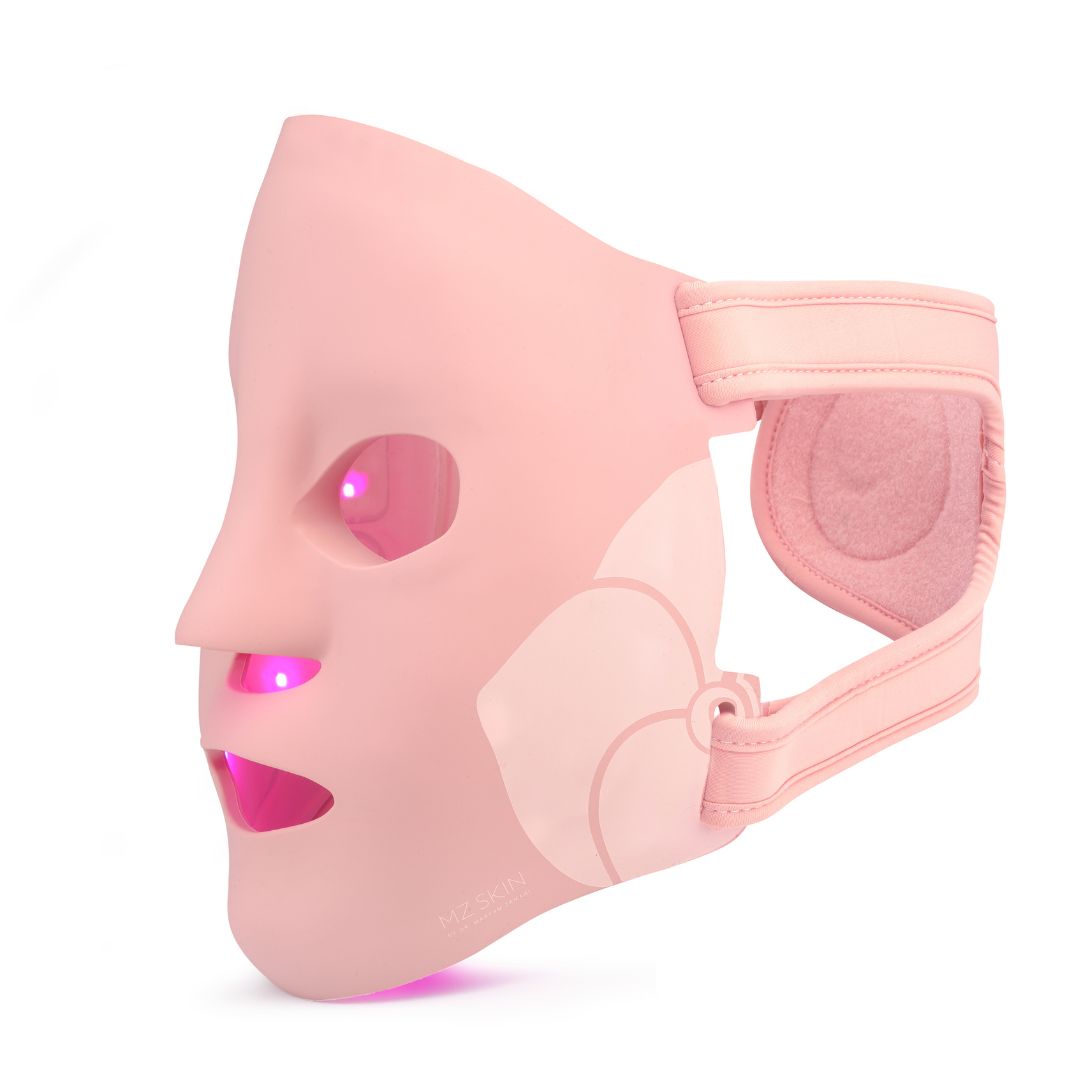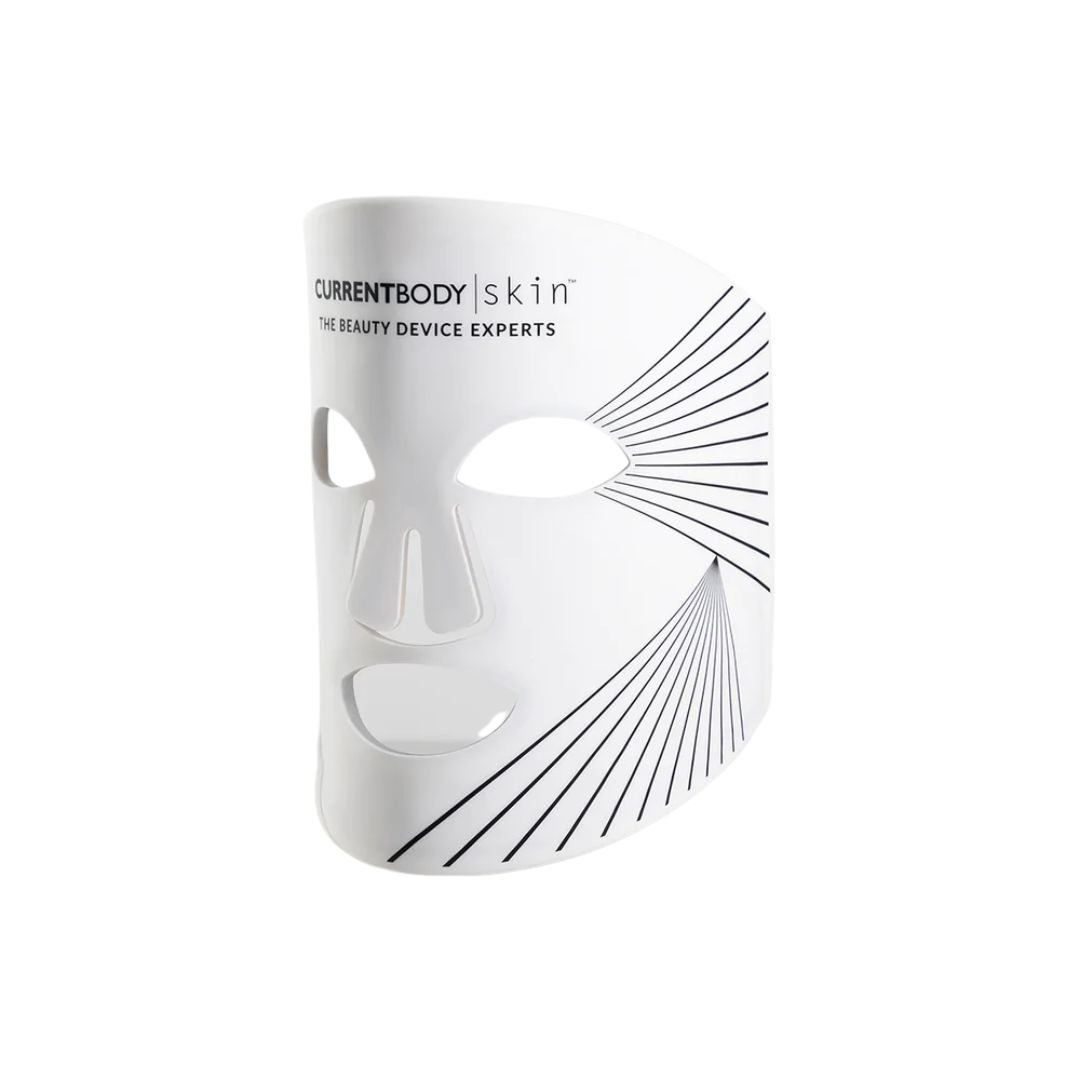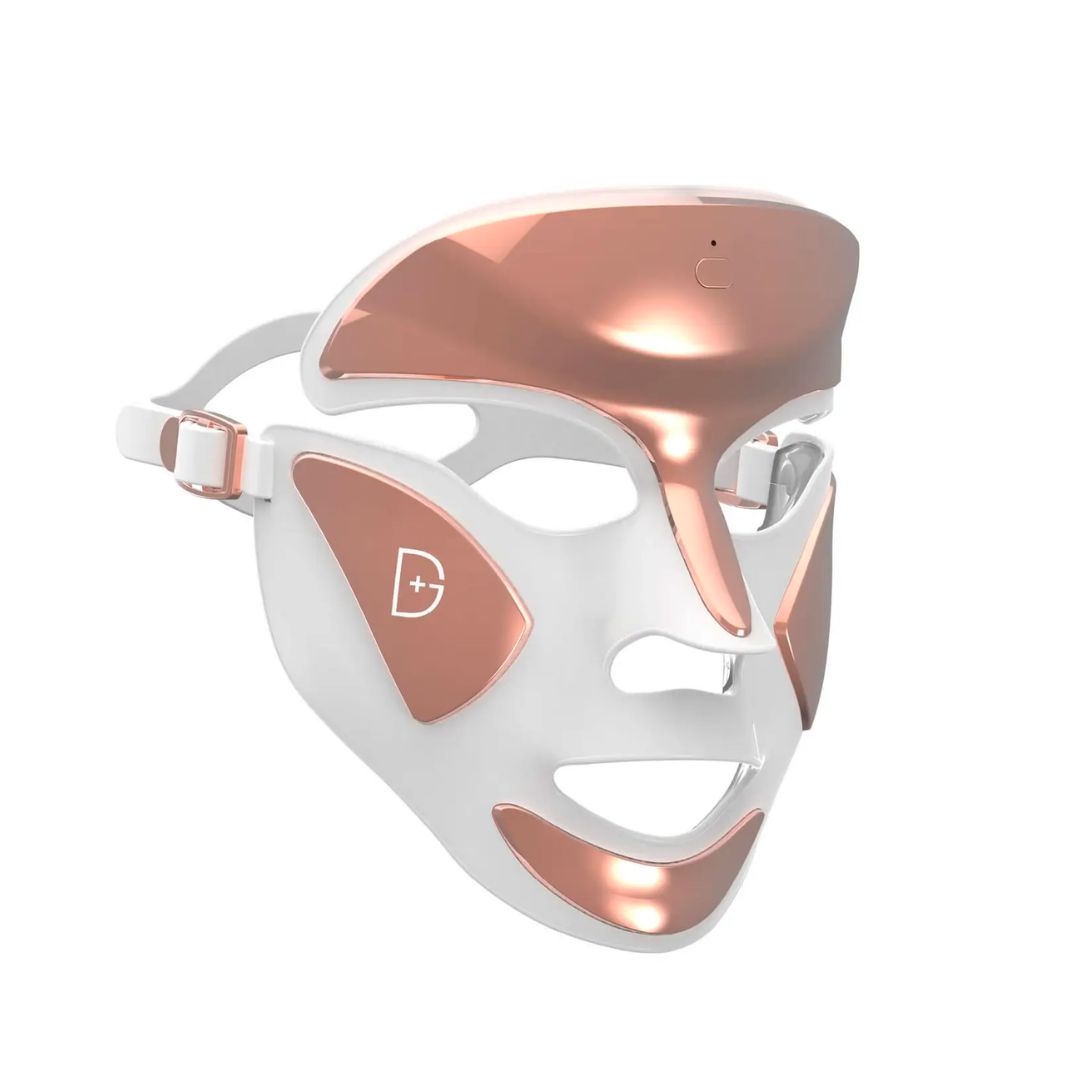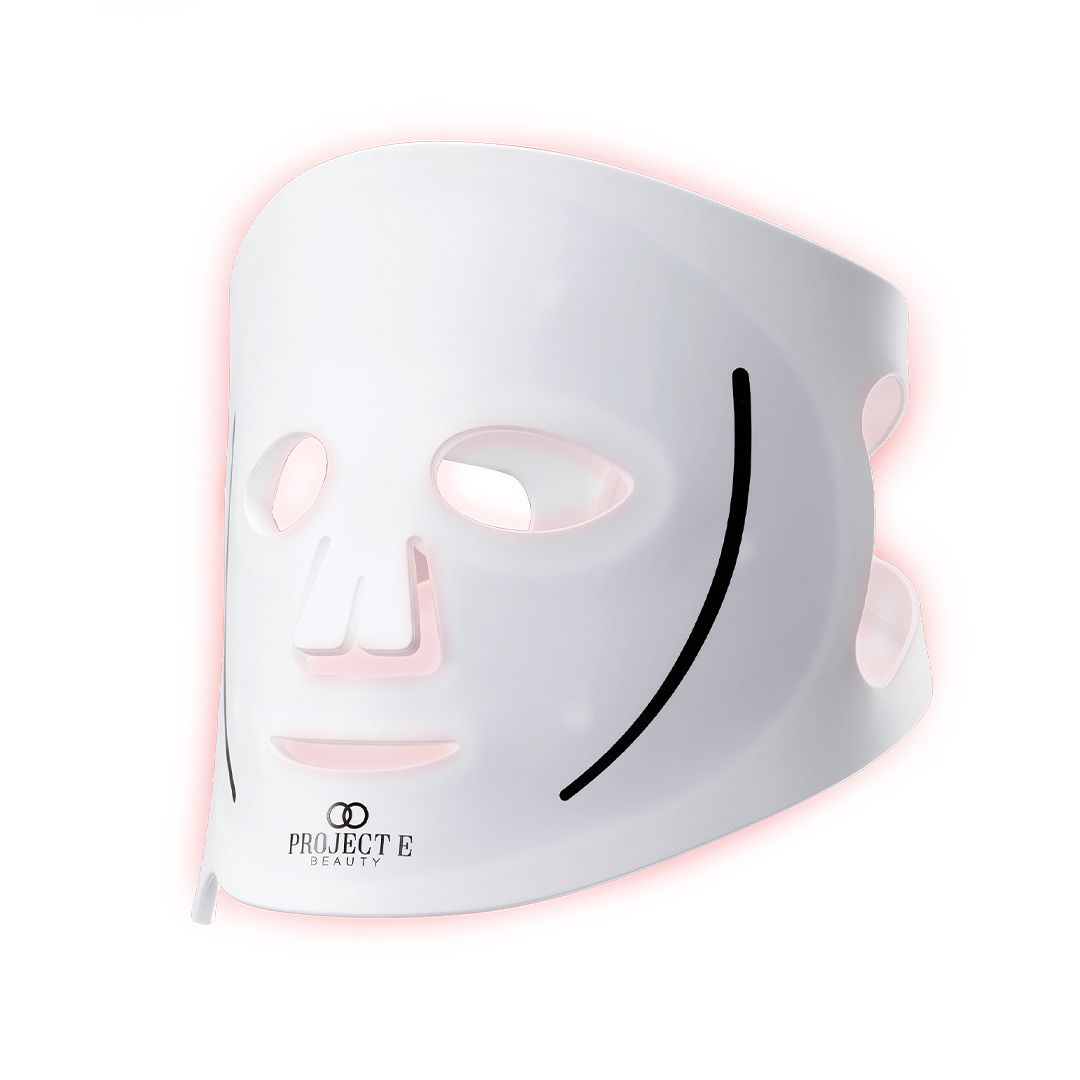Still not sure what LED masks *actually* do for your skin? Here's what experts want you to know
A worthy investment, providing you know this information
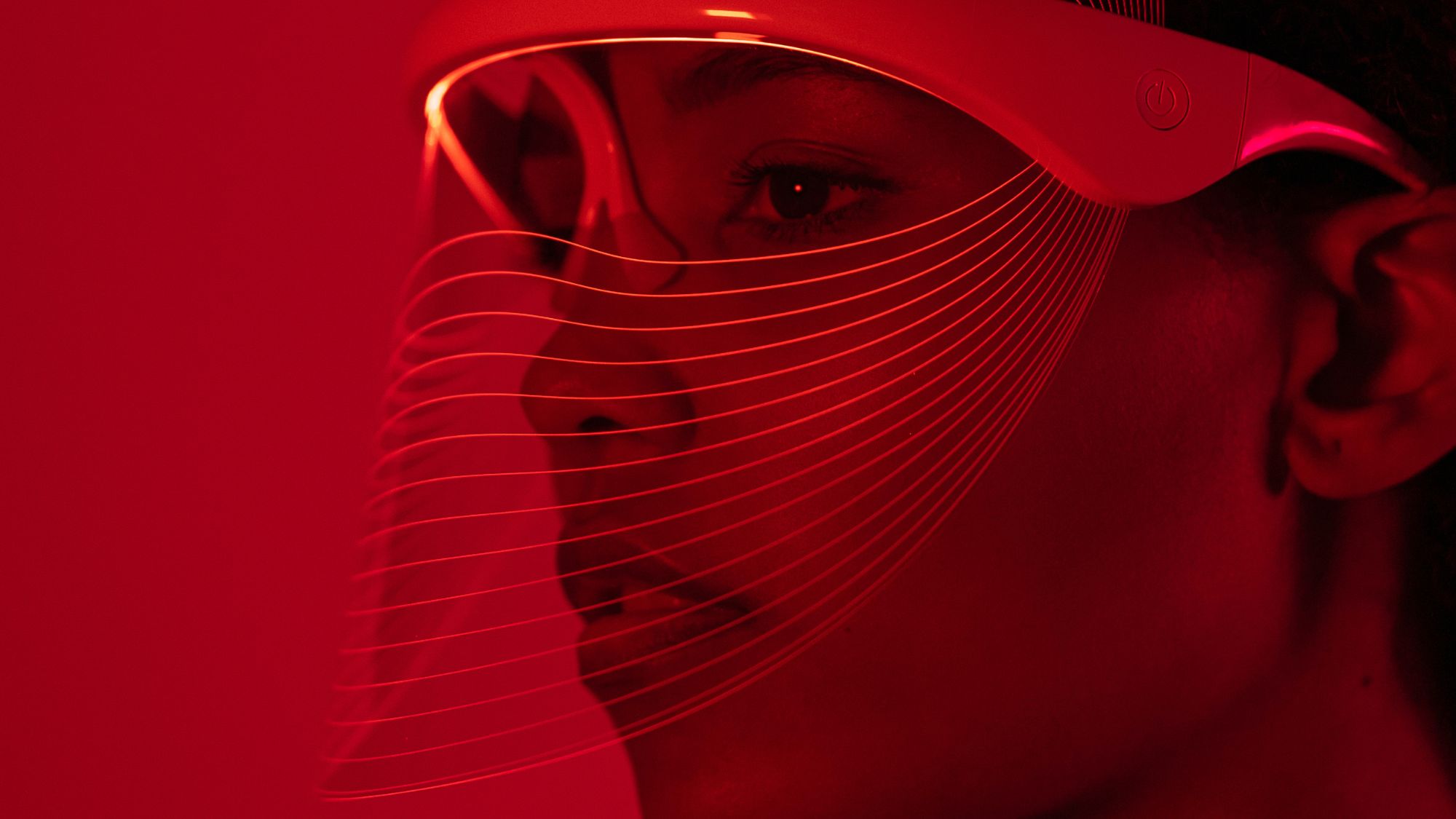

Hop on over to any influencer’s, celebrity’s, or editor’s socials and you’ll probably spy them sporting a futuristic LED mask. (The CurrentBody LED mask is a social-media favourite.) These masks work to better your skin health and have become somewhat famous amongst skintellectuals.
Perhaps you haven’t seen these masks dominating the beautysphere and you have absolutely no idea what I’m talking about. Maybe you’ve never heard of LED masks at all. I mean, what could lights possibly do for your skin? The answer is a lot.
Read on if you want to know what LED masks do, how they work, and why they’re different from in-clinic LED treatments. If you aren’t sure whether or not to add one to your collection, you’re in the right place. Here, I quiz experts to help debunk any TikTok-viral myths (there are many) and get to the nitty-gritty of what LED face masks can actually do for you.
What is LED light therapy?
LED masks boast a lengthy list of benefits, which is what makes them such a victim of their own success; it all sounds a bit too good to be true, and we still aren’t one-hundred percent sure as to why LED light therapy works so well.
In 1903, a Danish physician received a Nobel Prize for discovering red LED light accelerates the healing of sores, but even he was reluctant to use his findings because he still didn’t understand why it worked. According to NASA Spinoff, “Biophysicist Tiina Karu noted that [LED] treatment appears ‘highly incredible and even mysterious.’ What’s more, she wrote, its effectiveness against many different ailments only adds to doubts by creating the appearance of a proverbial snake-oil panacea.”
The science all began in the late 1980s when NASA funded an experiment for growing plants and potatoes in space. They used light-emitting diode (LED) technology and found a curious side-effect: the red and blue LEDs, which have the best wavelengths for driving photosynthesis, also transformed the hands of those who worked on the project. The NASA scientists found their cuts and scrapes healed faster under these lights.
There began a series of investigations into potential medical uses for LEDs, which were initially carried out to parry issues like muscle atrophy and slow wound healing in astronauts in space.
Celebrity news, beauty, fashion advice, and fascinating features, delivered straight to your inbox!
With all this being said, we still don’t know exactly what happens when LED lights hit your skin—just what the outcome is. We can only hazard an educated guess at what’s actually happening.
What do LED masks do?
Thanks to later experiments on rats and the U.S. Navy, they are now more sure that near-infrared light speeds up wound healing (especially wounds that are starved of oxygen), and we can be almost sure that this works by boosting the production of blood vessels, growth-factor proteins, and collagen. Ergo, their takeover of the skincare industry.
When it comes to skincare, LED masks use specific wavelengths of light to reduce inflammation, treat blemishes, minimise pigmentation, and even improve scarring.
“Blue light at 470 nanometres with red light at 630 nanometres balances and clarifies the skin, treating acne and reducing healing time after acne flare-ups. Blue light helps reduce the amount of P. acnes [a breakout-causing pathogen] that sits on the surface of skin,” explains Dr Maryam Zamani of MZ Skin.
CEO and Co-Founder of CurrentBody, Laurence Newman, adds: “Red LED light helps long-term with collagen production. Infra-red helps with healing and calming.”
Who can use an LED mask?
“Every skin type and tone can benefit from using an LED mask but you need to look for devices that suit your personal skincare needs, concerns, and goals,” says Lotti.
Laurence agrees that LED masks are beneficial for all, and he recommends using them preventatively, too. “It is recommended to start using LED in your 20s for preventative anti-ageing purposes but we also have some great customer case studies of those in their 40s, 50s, and 60s,” he says.
Dr Matthew Calcasola, GP and Chief Medical Officer at Get A Drip, says you can benefit from LED light therapy even if you suffer from rosacea or psoriasis, thanks to its healing, anti-inflammatory, and texture-improving properties.
It's worth noting that you should avoid LED light masks if you’re on certain medications, including isotretinoin (Accutane) for acne. Dr Catharine Denning, a cosmetic doctor who specialises in minimally invasive skin and facial enhancement procedures, adds that you should avoid LED masks if you take lithium.
The key takeaway? Always consult a doctor or dermatologist if you’re unsure.
How should you use an LED mask?
Dr Zamani, Dr Denning, Dr Calcasola and Dr Dennis Gross himself (the dermatologist, cancer researcher and founder of—you guessed it—Dr Dennis Gross Skincare) all tell me the same thing: consistency is key.
Dr Calcasola recommends incorporating LED light therapy into your usual skincare routine to get that consistency. Perhaps make it a nightly habit straight after washing your face and brushing your teeth. “It's also essential to use the LED mask as directed by the manufacturer and to follow any safety precautions or guidelines provided,” he adds.
You should use your mask for as long as the instructions suggest, but using it more frequently or for longer won't necessarily deliver more benefits. “The skin can only absorb a certain amount of light, so while more frequent use won’t cause any damage to the skin, you won’t necessarily see any further benefit. Though, blue light has been shown to cause pigmentation in some darker skin tones, so we would only recommend using blue light 2-3 times per week when blemishes and spots are active and then reducing to once per week to maintain the results,” explains Lotti.
Otherwise, the rules are simple: always use your device on clean and dry skin, and make sure you clean it between uses to prevent product or oil build-up, which could fuel blemishes.
How are LED masks different to in-clinic LED treatments?
“In-clinic LED treatments are much more powerful, however, the treatment is usually just once per month,” explains Dr Gross. At-home masks might be less powerful than in-clinic treatments, but they’re therefore designed for more regular use. “This allows you to get a daily dose of collagen production and acne treatment."
Are there any cons to using an LED mask?
Of course, there are drawbacks to using LED masks, as with anything. First of all, both in-clinic treatment and at-home masks are expensive.
Thanks to this, it’s easy to fall for cheaper and more accessible masks that might not use the right technology or evidence to back up their claims. Dr Denning says you should always use a mask that’s been cleared by the FDA or EU regulators, with clear scientific evidence and trials.
Aside from those on lithium and Accutane, those with migraines and epilepsy should take care when using LED masks, too. Dr Zamani notes that bright lights can trigger both of these conditions.
Dr Denning says: “Using an LED mask is relatively risk-free. It’s important to close your eyes while using a mask to avoid any potential damage to the eyes. if you get any redness, inflammation, or sensitivity (which is very uncommon) then stop using and seek medical advice.”
Do you *need* an LED mask in your routine?
“No,” says Dr Denning. LED masks are a luxury, after all. “I would always focus on a healthy lifestyle, consistent skincare using good-quality, science-backed products first, followed by in-clinic treatments such as microneedling and skin boosters, before suggesting at-home LED masks.”
Dr Gross confirms this. “An LED mask has great benefits and will give your skin routine a boost, but you do not need one. An LED mask should not replace your topical treatments. Instead, it should be used in conjunction,” he says.
What are the differences between different LED masks on the market?
When researching for this article, loads of you asked me to discuss the differences between the many LED masks on the market. This comes as no surprise; when you’re planning to drop a hefty few hundred on a bit of skin tech, you want to make sure you’re buying the right thing.
According to Dr Gross, there’s no black-and-white answer—it all depends on what you’re looking for. There are five different things you want to think about when comparing masks. Firstly, treatment times—some masks are made to be used for just three minutes per day, some upwards of 20 minutes. Secondly, you may want to consider a hands-free or tethered device. Thirdly, compare the number of lights—the more lights, the better the coverage and results. Next, look at the actual design. Would you prefer a mask that’s flexible? One that’s structured but boasts specific contours for the face? A good fit will allow for better light penetration. Lastly, look at the wavelengths—you want your mask to work at a clinically proven wavelength.
Shop LED masks

Humeara Mohamed is a freelance beauty editor and Marie Claire UK contributor. With nearly a decade of experience, you can find her work in Vogue, Refinery29, Grazia, Cosmopolitan, AnOther Magazine and Dazed. She’s also worked as a copywriter and consultant across brands like Cult Beauty, MAC Cosmetics, Estée Lauder and more. Though she writes about all things beauty, she's particularly obsessed with makeup – she simply cannot resist the allure of a new highlighter or green eyeshadow.
